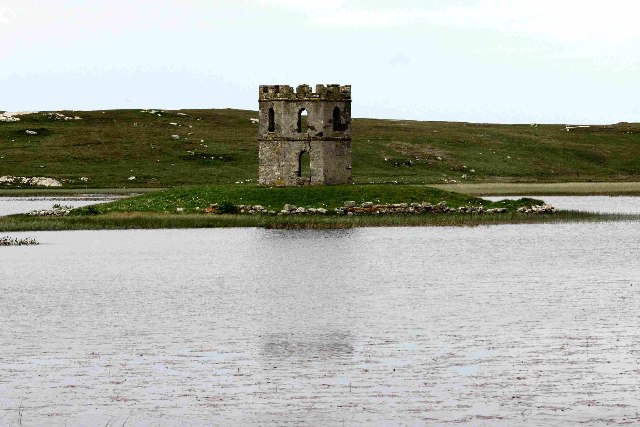Scolpaig Tower on:
[Wikipedia]
[Google]
[Amazon]
 Scolpaig Tower (also known as ''Dùn Scolpaig'' or ''MacLeod’s Folly'') is a
Scolpaig Tower (also known as ''Dùn Scolpaig'' or ''MacLeod’s Folly'') is a
 Scolpaig Tower (also known as ''Dùn Scolpaig'' or ''MacLeod’s Folly'') is a
Scolpaig Tower (also known as ''Dùn Scolpaig'' or ''MacLeod’s Folly'') is a Georgian
Georgian may refer to:
Common meanings
* Anything related to, or originating from Georgia (country)
** Georgians, an indigenous Caucasian ethnic group
** Georgian language, a Kartvelian language spoken by Georgians
**Georgian scripts, three scrip ...
folly
In architecture, a folly is a building constructed primarily for decoration, but suggesting through its appearance some other purpose, or of such extravagant appearance that it transcends the range of usual garden buildings.
Eighteenth-cent ...
located near the village of Scolpaig on the island of North Uist
North Uist ( gd, Uibhist a Tuath; sco, North Uise) is an island and community in the Outer Hebrides of Scotland.
Etymology
In Donald Munro's ''A Description of the Western Isles of Scotland Called Hybrides'' of 1549, North Uist, Benbecula and ...
in the Outer Hebrides. The name probably derives from the Old Norse
Old Norse, Old Nordic, or Old Scandinavian, is a stage of development of North Germanic dialects before their final divergence into separate Nordic languages. Old Norse was spoken by inhabitants of Scandinavia and their overseas settlemen ...
''scolpvik'', or 'Scolp Bay' (a ''scolp'' being a large Hebridean vessel, probably relating to the nearby bay where such boats may have landed).
It was built in about 1830 by Dr Alexander MacLeod, who was the factor
Factor, a Latin word meaning "who/which acts", may refer to:
Commerce
* Factor (agent), a person who acts for, notably a mercantile and colonial agent
* Factor (Scotland), a person or firm managing a Scottish estate
* Factors of production, suc ...
of the North Uist estate. It was erected to provide employment for the purpose of famine
A famine is a widespread scarcity of food, caused by several factors including war, natural disasters, crop failure, population imbalance, widespread poverty, an economic catastrophe or government policies. This phenomenon is usually accompani ...
relief. Built over an Iron Age
The Iron Age is the final epoch of the three-age division of the prehistory and protohistory of humanity. It was preceded by the Stone Age ( Paleolithic, Mesolithic, Neolithic) and the Bronze Age ( Chalcolithic). The concept has been mostl ...
dun
A dun is an ancient or medieval fort. In Ireland and Britain it is mainly a kind of hillfort and also a kind of Atlantic roundhouse.
Etymology
The term comes from Irish ''dún'' or Scottish Gaelic ''dùn'' (meaning "fort"), and is cognat ...
on a small islet
An islet is a very small, often unnamed island. Most definitions are not precise, but some suggest that an islet has little or no vegetation and cannot support human habitation. It may be made of rock, sand and/or hard coral; may be permanen ...
in Loch Scolpaig, the Gothic-style folly has an octagonal footprint and appears as a two-storey structure surmounted by a crenellated
A battlement in defensive architecture, such as that of city walls or castles, comprises a parapet (i.e., a defensive low wall between chest-height and head-height), in which gaps or indentations, which are often rectangular, occur at interva ...
parapet
A parapet is a barrier that is an extension of the wall at the edge of a roof, terrace, balcony, walkway or other structure. The word comes ultimately from the Italian ''parapetto'' (''parare'' 'to cover/defend' and ''petto'' 'chest/breast'). ...
. The tower is surrounded by a low stone wall that was probably constructed at the same time. The original dun has disappeared entirely. Today the tower is open to the elements and serves as a nesting place for birds.
It was included in the ''Ninth Report and Inventory of Monuments and Constructions in the Outer Hebrides, Skye and the Small Isles
The Small Isles ('' gd, Na h-Eileanan Tarsainn'') are a small archipelago of islands in the Inner Hebrides, off the west coast of Scotland. They lie south of Skye and north of Mull and Ardnamurchan – the most westerly point of main ...
'' (1928) of the Royal Commission on the Ancient and Historical Monuments of Scotland. In Historic Scotland
Historic Scotland ( gd, Alba Aosmhor) was an executive agency of the Scottish Office and later the Scottish Government from 1991 to 2015, responsible for safeguarding Scotland's built heritage, and promoting its understanding and enjoyment ...
approved it as a Category B listed building in 1971, however this was withdrawn in 2018 as part of the Dual Designation 2A project though the site continues to be protected as part of a scheduled monument
In the United Kingdom, a scheduled monument is a nationally important archaeological site or historic building, given protection against unauthorised change.
The various pieces of legislation that legally protect heritage assets from damage and d ...
.
Scolpaig Tower is located at OS Grid Reference NF73107503. When the water level is sufficiently low, it can be reached via a stone causeway in Loch Scolpaig. The tower is a prominent feature on otherwise flat ground and is among the most photographed sites on the island.
A group organised by the Council for Scottish Archaeology
Archaeology Scotland, formerly known as the Council for Scottish Archaeology (CSA) is a membership organisation which seeks to promote the understanding of archaeology in Scotland. This group works with lay people and academia to help care for th ...
under its Adopt-a-Monument scheme was in 2008 attempting to raise funds to stabilise and conserve the structure.
References
* * * * * * *Footnotes
{{DEFAULTSORT:Scolpaig Tower Towers completed in 1830 History of the Outer Hebrides Archaeological sites in the Outer Hebrides Folly buildings in Scotland North Uist 1830 establishments in Scotland Scheduled monuments in Scotland